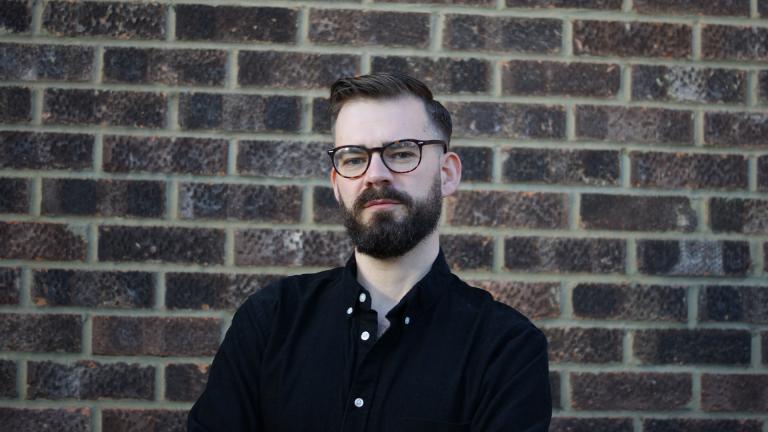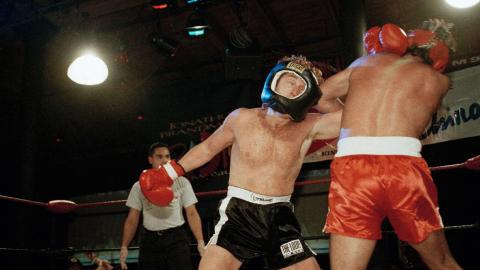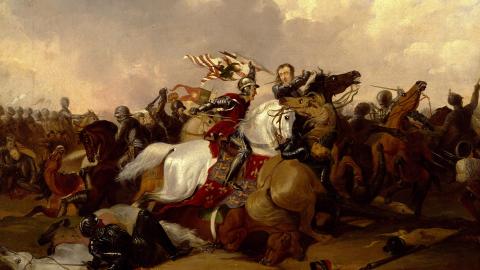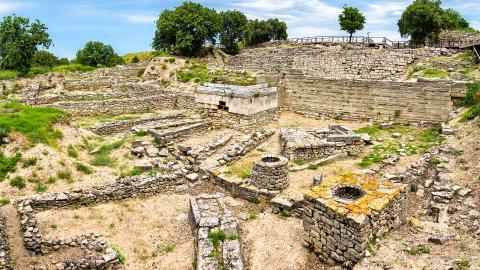Historian uncovers Asia’s forgotten battles after Japan’s WWII surrender
Dr Daniel Cowling, Senior Historian at the National Army Museum, traces the battles that continued long after VJ Day was celebrated.
In this guest article, Dr Daniel Cowling revisits the end of the Second World War to highlight how forces in Asia continued to fight after the 1945 Armistice. Dr Cowling is a Senior Historian at the National Army Museum in London, where the 'Beyond Burma: Forgotten Armies' exhibition is now open until 13 April 2026. The exhibition, which is free to visit, shines a light on British, Indian, Burmese and African soldiers who fought for the Allies against Imperial Japan.
On 6th November, the world premiere of Sky HISTORY's new documentary The Last Burma Star will be held at the National Army Museum. Explorer Levison Wood and historian Alex Bescoby go in search of the last living veterans from the Burma campaign to finally give them the recognition they deserve.
The Last Burma Star will be available Sunday, 9 November on Sky HISTORY and HISTORY Play.
In late November 1945, British nurse Winifred Aldwinckle arrived on the island of Java in the Dutch East Indies (now Indonesia) to the sounds of gunfire. The city of Surabaya was aflame as street battles raged between Indonesian republican militias and British and Indian Army troops.
For Aldwinckle, it came as something of a shock – as far as she was concerned, the war had finished back in August. And yet, three months later, here she was entering an active warzone. The experienced army nurse expressed a sense of bewilderment in her diary, writing that it made ‘everything seem unreal’.
Aldwinckle’s experiences during the final months of 1945 encapsulate an important and still unresolved historical debate: when did the Second World War actually end? The answer, it turns out, is anything but straightforward.

War and Peace
Historically, there tends to be a clear demarcation between war and peace, often a ceasefire or treaty that brings the fighting to a definitive conclusion. Perhaps the most famous example is the Armistice agreed to end the First World War at 11am on 11th November 1918.
The Second World War was no different: the Japanese Instrument of Surrender, announced in mid-August 1945 and signed in early September, officially marked the end of the conflict. This followed on from the capitulation of Nazi Germany on 8th May.
Yet peace, like war, is a complex business. In Southeast Asia, the final months of 1945 proved to be anything but peaceful. Rather, the most immediate outcome of Japan’s defeat was renewed uncertainty, upheaval and conflict – as Winifred Aldwinckle found out firsthand.
The Path to Victory
From December 1941 until August 1945, British and Commonwealth troops fought fiercely against the forces of the Japanese Empire. Following early defeats in Singapore, Burma (now Myanmar), and Malaya (now Malaysia), the Allied fightback began in 1943. The Fourteenth Army’s spirited rearguard at Imphal and Kohima in north-east India preceded an offensive that would eventually recapture Burma in 1945.
This multinational force - which included British, Indian, Commonwealth, Burmese and African troops - faced a determined opponent and toiled under the extreme conditions of jungle warfare. The Fourteenth Army spearheaded the Allied victory in Burma and set the course towards the final defeat of Japan.
At midnight on 14th August 1945, Britain’s Prime Minister Clement Attlee delivered a radio broadcast explaining that ‘Japan has today surrendered. The last of our enemies is laid low’. In Britain and across the empire, 15th August was declared Victory over Japan Day (VJ Day). From London to Nairobi, crowds of people eagerly celebrated this long-awaited news.

A World in Transition
For the many millions of soldiers and civilians in Southeast Asia, however, VJ Day was anything but definitive. Thousands of British prisoners of war remained captive in Japanese camps with little knowledge of the outside world. Even when news of the surrender finally reached them, the means of getting home were shrouded in uncertainty.
On the frontlines, tensions remained high. In the weeks and months that followed, British, Empire and Commonwealth soldiers grew impatient awaiting their demobilisation from the forces. Yet the rapid collapse of the Japanese Empire had created a power vacuum, and it soon became clear that the Allied victory had not brought peace to the region.
With the future of Southeast Asia hanging Britain's soldiers were handed a multitude of new duties. These ranged from conducting Allied prisoners of war home and disarming Japanese soldiers to occupation duties in Japan and beyond.

War Without End
Britain’s soldiers were also tasked with re-establishing control over the nation’s former colonial possessions, including Hong Kong and Singapore. In some cases, national independence movements contested the restoration of imperial rule – and new armed conflicts broke out which persisted long after August 1945.
In Malaya, pro-independence forces resisted the return of Britain as a colonial power, eventually resulting in the open warfare of the Malayan Emergency (1948-60).
British and Indian Army forces also became entangled in colonial wars in French Indochina (now Vietnam, Cambodia, and Laos) and the Dutch East Indies (now Indonesia). In August 1945, with France and the Netherlands unable to muster military forces sufficient to reassert their own power, British and Indian troops were deployed to support their European allies. In addition, thousands of Japanese prisoners of war were temporarily re-armed to help the European powers.
In Burma, a British governor was returned to power in October 1945. Yet an increasingly powerful Burmese independence movement pushed for the end of British rule. Following a period of political unrest and violence, Burma became an independent nation on 4th January 1948. In the decades that followed, repeated bouts of armed conflict and instability plagued the country and its people – including many veterans of the Fourteenth Army.
Cold War
Alongside the complex machinations of empire, Southeast Asia also emerged as an important frontline in the early Cold War.
In Malaya, French Indochina, and the Dutch East Indies, communists spearheaded national independence movements. While in Korea, liberated from decades of Japanese rule, the Soviet Union and the United States shared responsibility for a transitional military government with control over the north and south respectively.
By 1948, as the Cold War intensified, two separate Korean nations were formed – and two years later the outbreak of the Korean War (1950-53) would see British and US troops deployed in defence of South Korea against Soviet-backed North Korea and their Chinese allies.
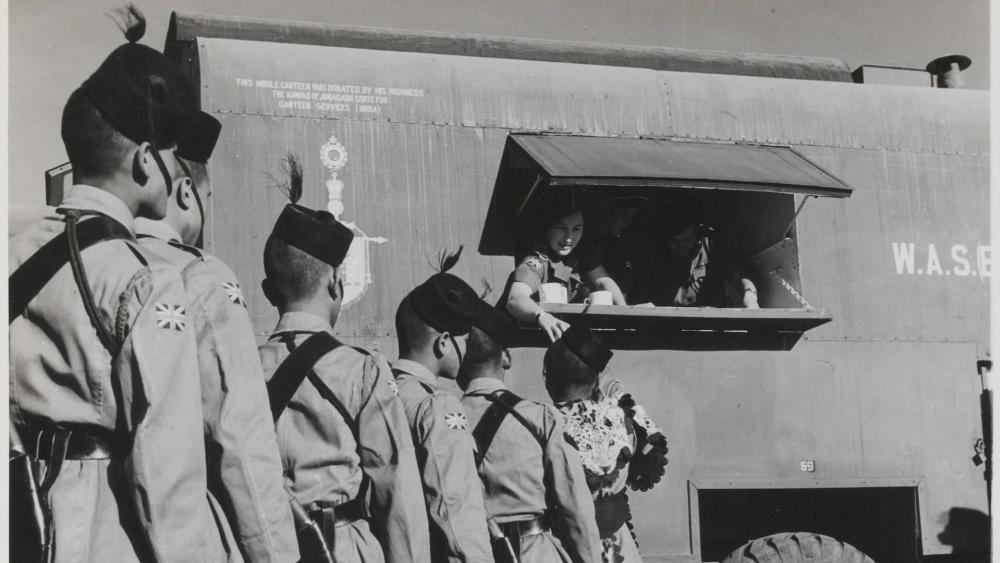
Legacies
As we can see, the end of the Second World War was not a single day but rather a drawn-out, multi-layered period of weeks, months or even years. The complex aftermath of VJ Day was marked with bouts of conflict, mass upheaval, and enduring uncertainty.
For the diverse coalition of soldiers that had defeated Japan – including Burmese, Indian, African, and British troops – the end of the war meant many different things. In some cases, the Second World War ended peacefully aboard a steamship back to the British Isles. For others, the conflict endured long beyond August 1945 amid years of upheaval that would fundamentally reshape the history of Southeast Asia.
Ultimately, however, whether we mark the war’s end as 1945, 1948, or 1953 is less significant than simply acknowledging the profound legacies of the Second World War in Myanmar, Indonesia, and beyond. 80 years on, it is finally time to tell this multifaceted history in full.
Visit the 'Beyond Burma: Forgotten Armies' exhibition at the National Army Museum in London for free until 13 April 2026.
The Last Burma Star will be available Sunday, 9 November on Sky HISTORY and HISTORY Play.
